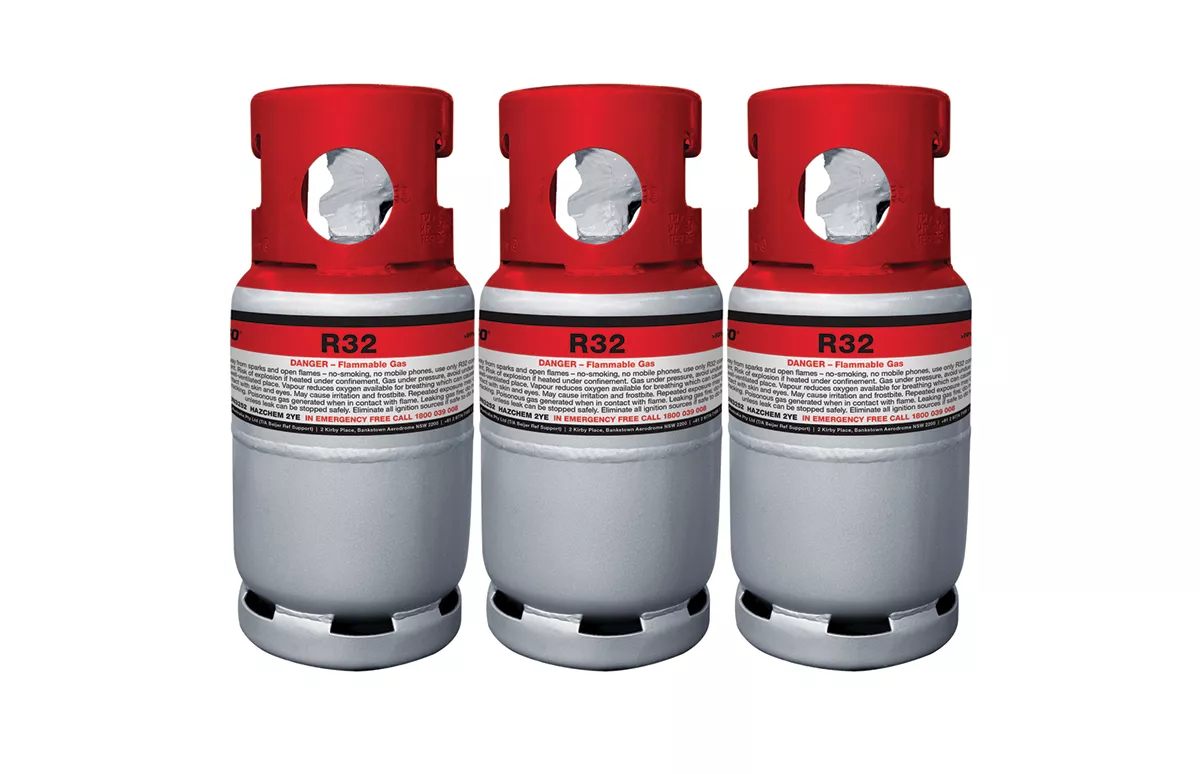With the HFC phasedown aiming to reduce usage by 85% by 2036, there will be more air conditioning and refrigeration equipment designed to take low GWP refrigerants such as R32.
The use of alternative low GWP (Global Warming Potential) refrigerants will be critical to meet Australia’s climate goals. However, it is important to note that some low GWP refrigerants, such as R32, can be mildly flammable. But with the right training and precautions, these refrigerants can be handled safely and all with less impact on the environment.
Technicians who wish to work with flammable refrigerants must complete the appropriate training, be familiar with the Flammable Refrigerants Safety Guide and be licensed to show that they have the required competencies.
An online Flammable Refrigerants Safety Guide (FRSG) has been produced by the Australian Institute of Refrigeration, Air Conditioning and Heating (AIRAH).
The free guide is designed to improve awareness of how to best manage the health and safety risks associated with the use and management of flammable refrigerants in stationary refrigeration and air conditioning equipment.
Register for the course here
Here are some tips to help with dealing with flammable refrigerants:
- Make sure your equipment is designed to handle flammable refrigerants. Flammable refrigerants, whilst being workable refrigerants, should only be used or considered in OEM specifically designed or approved systems. Not all equipment is engineered for use with flammable refrigerants so always follow the manufacturer’s instructions to ensure your equipment is suitable.
- If you are retrofitting your system, be careful as your equipment may not be engineered to handle flammable refrigerants. Always check with the manufacturer. Guidelines are available from refrigerant manufacturers and equipment/component suppliers and must be followed.Beijer Ref is opposed to the retrofit of refrigeration and air conditioning systems that currently use a freon refrigerant that was not designed specifically to accommodate flammable refrigerants.
- Strict standards and procedures must be followed when using flammable refrigerants. Flammable refrigerants require additional safety controls in storage and transport, that must also be considered. Always check the local compliance regulations in your State or area and be alert to changes in industry standards.
- Ensure only people trained to work with flammable refrigerants are allowed to design, install and service the equipment. Technicians who wish to work with flammable refrigerants must complete the appropriate training, be familiar with the Flammable Refrigerants Safety Guide and be licensed to show that they have the required competencies.
- If you’re not sure – ask. The team at Kirby and Beijer Ref can help direct you to additional resources to support you and your team.
Here are some additional resources:
